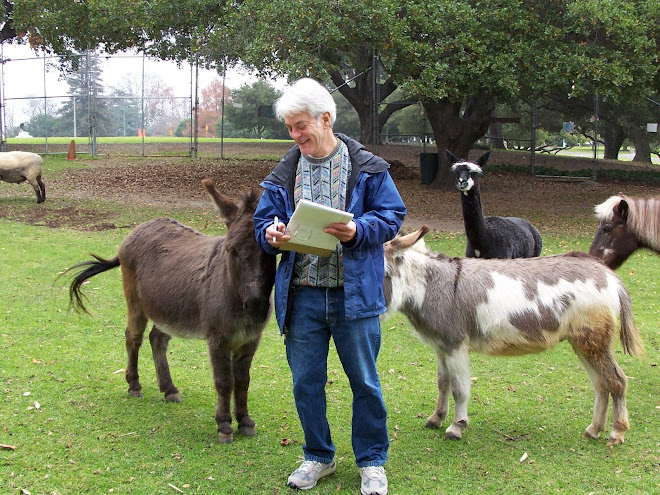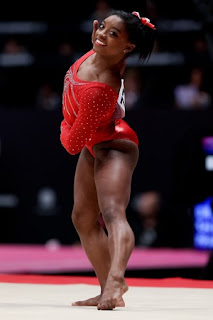(Above: On May 11, 1994, First Lady Hillary Clinton and five of her predecessors -Barbara Bush, Nancy Reagan, Rosalynn Carter,
Betty Ford and Lady Bird Johnson - in an unprecedented joint fundraising
effort to create the National Botanical Garden on the National Mall. The only living First Lady unable to attend was Jacqueline Kennedy Onassis, who was then terminally ill, and died a week later. Photo from the Clinton Presidential Library.)
I thought I was being so clever, waiting until this morning to run this story on the California magazine the day after Hillary Clinton's smashing election victory. Needless to say, it didn't quite work out that way, and this story will never see the light of day - except here:
Now that Hillary Clinton has been
elected America's first female president, the top item on her to-do list, even before
she tackles ISIS and the economy, is: What are we going to do with Bill?
"I wouldn't be surprised if
she named him ambassador to Tokyo," says Daniel Sargent, Associate
Professor of History at Cal. "Getting him out of Washington would be the
most prudent move she could make."
But why Tokyo?
"Because we don't have an
embassy in Antarctica."
Seriously, though, Bill Clinton
presents a challenge for both the president-elect and the rest of us, starting
with what to call him: First Gentleman? First Spouse? Or, as Sarah Palin used
to call her husband Todd, First Dude?
"I think 'First Gent' has a
nice ring to it," says Carl Anthony, official historian at the National
First Ladies Library and author of a dozen books on the subject of presidential
spouses, including individual biographies of Jackie Kennedy, Nellie Taft, Betty
Ford, and Florence Harding. "It's short, sweet, and a little jaunty."
Whatever we call him, how will
our first male presidential spouse change the job?
"The question is complicated
by the fact that Bill will not only be the first man in that role, he'll be the
first former president, too," says Sargent. "But in the end, it's the
dynamics of the marriage and the tenor of the times that have always determined
what the role is, and that role has fluctuated over the years. For instance,
before the 1950s we had several first ladies who exerted considerable political
influence, including Eleanor Roosevelt and Woodrow Wilson's second wife, Edith,
who became the de facto president for the last year of his term after he
suffered a stroke. It's striking that it was she, not the Vice President, Thomas
Marshall, who took over.
"But after World War II we
had a retrenchment, a redefinition of the role into a symbolic, maternal,
feminine figure, like Mamie Eisenhower. It's easy for historians to
characterize the '50s as a period of traditional beliefs that have been set in
stone since time immemorial, but it's more accurate to say it was a time of
self-conscious reaction against the assertiveness of the pre-war period."
Of course, even the most
political First Ladies have taken pains to play down that aspect of their role.
In her autobiography, Eleanor Roosevelt wrote, "The political influence
that was attributed to me was nil where my husband was concerned. If I felt
strongly about anything, I told Franklin, since he had the power to do things
and I did not. But he did not always feel as I felt."
But in his book Eleanor and Franklin, Eleanor's protégé
Joseph Lash describes their daughter Anna squirming uncomfortably at the dinner
table as Eleanor hectored FDR over some policy issue and finally blurting,
"Mother, you're giving Father indigestion!"
Anthony says the position of
presidential spouse is actually a combination of two different roles, and each occupant
of the position has balanced them differently.
"One the one hand, you're
the spouse. On the other, you're First Lady. One role is personal; the other is
ceremonial. It's been slightly over 100 years since we haven't had a
presidential spouse in the White House - the period from the death of Ellen
Wilson in 1914 to the president's second marriage a year later. We had no
presidential wife, but we still had a First Lady - actually, two: Wilson's
daughter Margaret and Ellen's secretary, Helen Bones. Together, these two women
fulfilled the ceremonial role. So that's the first scenario: no spouse, but a
female relative standing alongside the president at public ceremonies.
"Go back a little deeper
into the 19th Century, and we have a slightly different twist on
this duality. For instance, Andrew Johnson's wife Eliza had tuberculosis, and
when they moved into the presidential mansion in June 1865, two months after
the Lincoln assassination, it was announced in the newspapers that Mrs.
Johnson, given her delicate health, would not be performing the public role as
hostess in the White House. So her married daughter, Martha Patterson, took
over the public role. But Eliza still performed her private role as
presidential spouse. She sustained him emotionally during his impeachment trial
and gave him advice. So that's scenario number two – private yes, public no.
"The third variation on this
scenario is the times when we had presidents who were widowers when they
entered the White House, like Thomas Jefferson, Martin Van Buren, and Chester
Arthur, so we had neither a presidential spouse nor a First Lady. Most history
books will tell you that Jefferson's daughter Martha, Van Buren's
daughter-in-law Angelica, and Arthur's sister Mary Arthur McElroy performed the
hostess duties, but that's just a summary, and in a summery the truth gets lost.
"The fact is that Jefferson
was president for eight years, but Martha came up to the White House for only
two social seasons. All the 'female' decisions – selecting the China patterns,
choosing the guest list, planning the menus – Jefferson did all that himself.
"Same thing with Van Buren.
Angela didn't marry his son Abram until the last year of his term, and most of
that time was spent on honeymoon in Europe with her husband. So for most of his
administration the China patterns, guest lists, and menus were selected by the
president himself. The same thing was repeated in the Arthur administration. And
as recently as Richard Nixon, you have a president who was weighing in on
choices for food and wine that were being served to guests at state dinners.
"So there is nothing in
history to suggest that Hillary Clinton can't do it. All those chuckles and
hoo-ha about Bill choosing the menus are just not the case. The Clinton
situation is not going to provide one ultimate 'right' choice in terms of
historical precedent. She might have Bill or Chelsea serve as surrogates on
particular social occasions – for example, the First Lady's afternoon teas,
which have been going on since the McKinley administration. The First Lady
doesn't actually serve the tea, she just stands in the receiving line. So all
those chuckles and hoo-ha about Bill serving tea are just not the case. None of
them served tea.
"Then there are the
occasions when the head of state of another country visits the White House. He
or she is welcomed on the North Portico by both the President and First Lady,
and Bill has already done that. The only difference this time is that she will
be making the welcoming speech instead of him."
"So you can see that there's
no one 'right' way to be First Lady. It can be whatever the Clintons make of
it. There's historical precedent for whatever they choose."
But Dan Mulhern, a lecturer at
Cal's Goldman School of Public Policy, says that though the public role of
First Lady waxes and wanes from administration to administration, the private
role – presidential spouse – is just as important as ever. And he speaks from
personal experience; he spent eight years as First Gent of Michigan when his
wife, Jennifer Granholm (who graduated from Cal in 1984 and currently heads Hillary
Clinton's transition team), served as governor from 2003 to 2011.
"The best advice I ever got
was from a former First Lady of Michigan, Paula Blanchard," he says.
"She told me, 'Your primary role will be emotional. Your wife is going to
get assailed from a thousand different directions. Even your closest friends
will have an agenda. She's going to be on stage 24/7, so she'll need a safe
harbor.' I knew in my bones she was right. I knew it was true, and it remained
true, and it's more true now than it was then."
And he's shared this advice with
Bill Clinton.
"I talked to him about this
in 2008 during the primary campaign. I told him, 'The most important thing you
can do is support Hillary. Help her be her best, be a sounding board, and
remind her of her heart, her vision, and why she's in it in the first place
when it's getting ugly or when you're going through a difficult stretch.' And
he was receptive. We haven't talked about it since."
But make no mistake: This will be
a life-changer for Bill.
"When you're in this role,
it's not unlike an altar boy to a priest or a caddy to a golfer," Mulhern
says. "It's not about you and your strengths, and Bill's strengths are
extraordinary. He's going to face the challenge of being on the sidelines, of not
having knee-jerk reactions and writing tweets at three in the morning. People
come up to you, look right past you, or use you to get to your wife. They think
you're just a nice piece of arm candy. Women have a lot more experience dealing
with that B.S., but he's going to have to learn."































